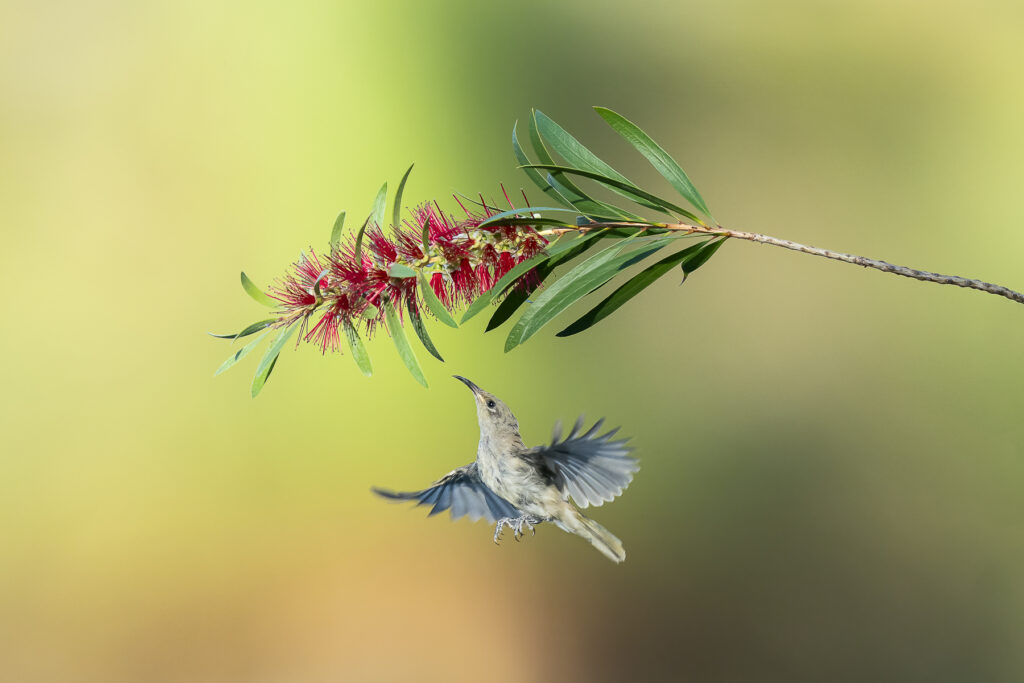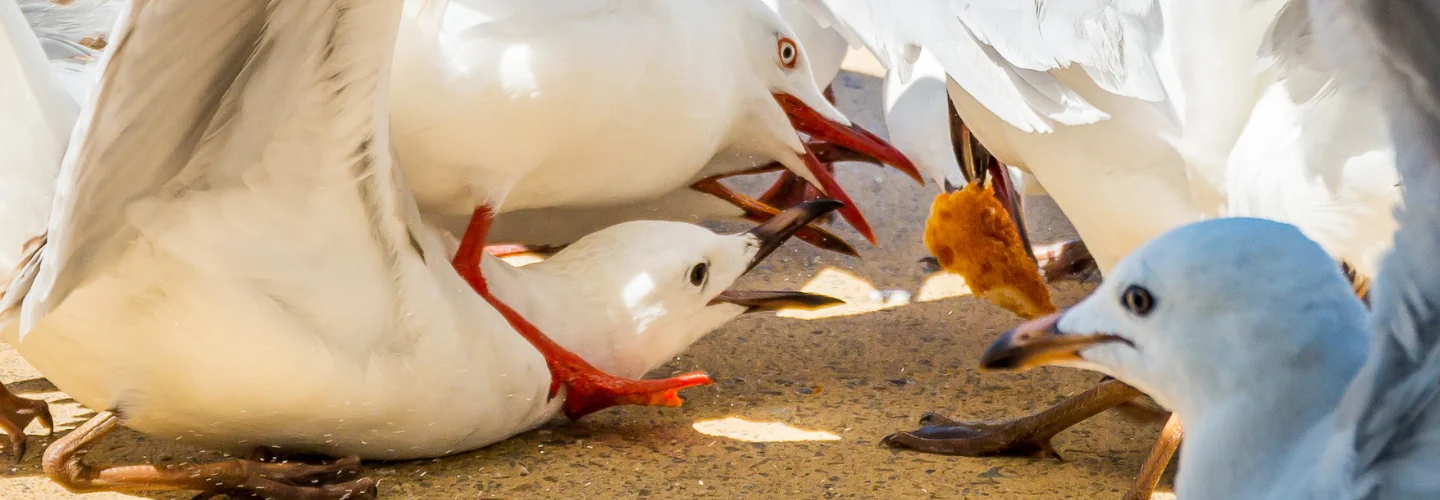What you need to know about feeding wild birds in Australia
And how to do it properly
As a bird conservation charity, BirdLife Australia does not encourage wild bird feeding.
Feeding wild birds is a controversial issue, especially in Australia. In some countries, it’s actively encouraged – but in Australia, official advice from councils, environment departments and conservation and wildlife rescue groups warns against the dangers of feeding wild birds. In Western Australia, it’s illegal to feed native fauna, including birds, without a licence.
Still, millions of well-meaning Australians continue to enjoy feeding the birds in their backyard. Unfortunately, many don’t realise that feeding wild birds can do more harm than good for our feathered friends – and if done incorrectly, can lead to serious problems including malnutrition, disease and unbalanced populations.
In an ideal world, people wouldn’t feed wild birds at all – but with as many as 30 to 50% of Australian households feeding birds, it’s important that people are aware of the risks of wild bird feeding and how to avoid harming the same wildlife they want to help.
In this guide, we unpack the complexities of wild bird feeding and address supplementary feeding, reducing the spread of disease and nutrition advice for birds for your consideration.
So, if you are going to feed wild birds, here’s how to do it properly. Always ensure you are abiding by local or state laws around feeding wildlife.
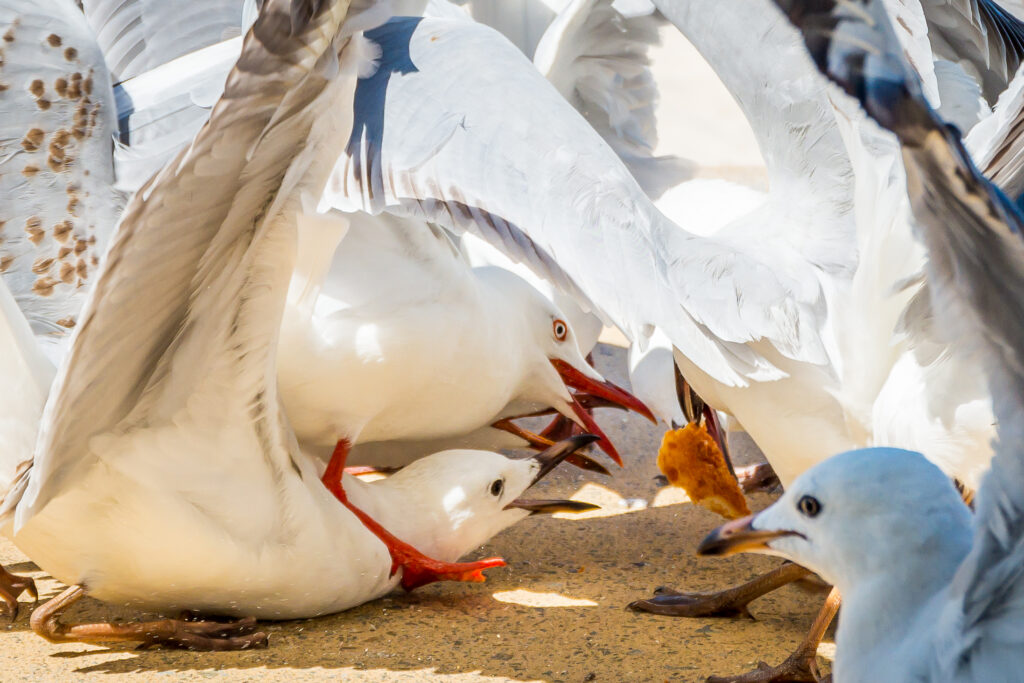
What to feed wild birds – and what to avoid
What you feed wild birds matters. Most Australian birds need a varied and balanced diet of insects and nectar, seed or fruit to stay healthy, but most people aren’t feeding birds their natural diet.
Feeding birds the wrong foods disrupts this balance – and can cause serious, long-term health problems including malnutrition and disease. If you must feed wild birds, here’s what you should and shouldn’t give them.
DON’T feed birds:
Bread, crackers or other human snacks
While bread is often the first food people reach for to feed the birds around them, it’s often highly-processed and high in salt.
Bread contains little to no nutritional value for birds, and quickly fills a bird’s stomach with empty calories and none of the energy or nutrients they need to stay healthy. Larger pieces can easily get stuck in their crops (the specialised pouch in their oesophagus used for storing food).
Bread also gets mouldy quickly, which is especially toxic for birds – mould spores can cause Aspergillosis, a potentially fatal respiratory infection. And in water, bread left uneaten by ducks and other waterfowl can even cause a build-up of toxic algae. In short, feeding birds bread is never a good idea.
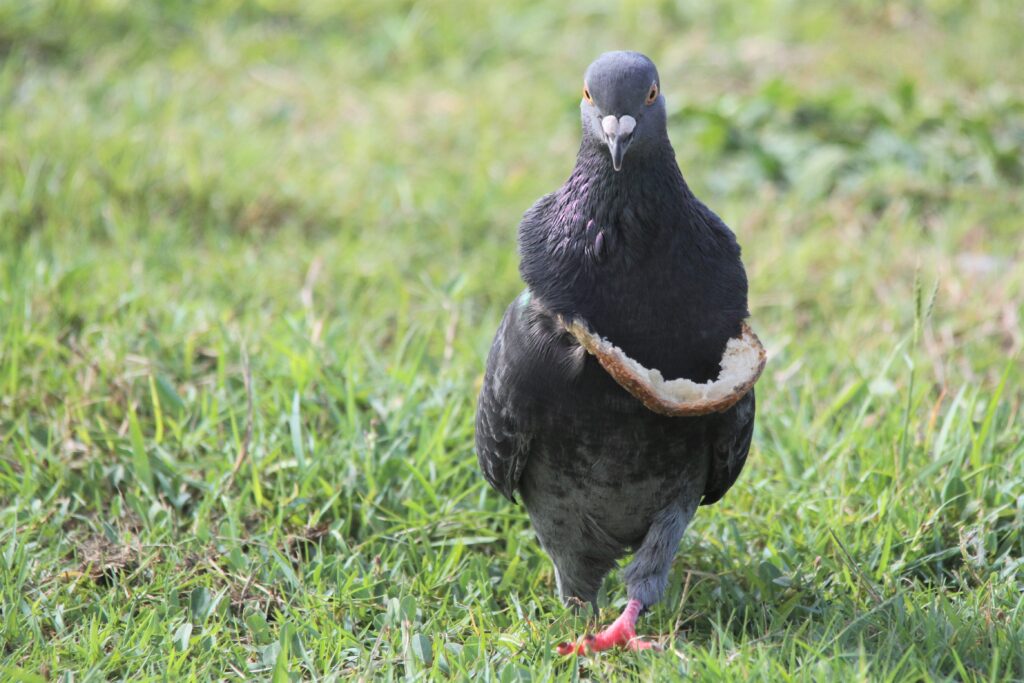
Dairy products
Typically, birds cannot digest lactose – so it’s best to avoid feeding your backyard birds dairy products like milk, cheese or yoghurt. Most cheese is also high in fat and salt and prone to mould growth, and can attract unwelcome visitors like vermin to your bird feeder.
Mince and raw meat
It might be cheap and convenient, but mince also tops the list of bird-feeding no-no’s. Mince lacks calcium and other important nutrients that carnivorous and omnivorous birds would usually get from their natural diet. Raw meat and mince can lead to calcium deficiencies in young birds – which in turn can cause brittle bones and beaks and even long-term metabolic bone disease. Mince can also stick to their beaks, causing bacterial infection. By feeding birds mince, you could be killing them with your kindness. Raw meat is also high in the wrong kinds of nutrients and minerals (like fat and phosphorous), so if you feed other meat to birds, make sure to add an insectivore supplement to it.
Honey and sugar
Nectar-feeding birds like honeyeaters thrive on a diet of nectar and pollen from our native flowers, and other naturally-occurring sugary sweets like lerps, manna and honeydew. This food is abundant and rich in the energy and complex sugars they need to survive – unlike mixing water with sugar or honey, which are high in the wrong kinds of sugars.
Instead, we recommend planting a variety of flowering native shrubs as a safe and healthy food source for the nectar-feeding birds in your backyard.
You CAN feed birds:
Bird nectar mix
Suitable for honeyeaters and lorikeets
You can purchase wet or dry nectar mixes from Australian pet stores. Unlike homemade mixes, these are specially formulated, nutritionally balanced and mimic the natural diets of nectar-eating birds like honeyeaters and lorikeets.
Tips: these mixes spoil very quickly and need to be replaced every few hours. Avoid this food if you cannot clean it up regularly.
Fresh fruit and vegetables
Suitable for fruit-feeders such as parrots, pigeons and doves and bowerbirds
You can provide small quantities of nutrient-rich fruit and vegetables to the fruit and nectar-eating birds in your backyard – including grapes, berries, peas, leafy greens and chopped up apple, pear, tomato, melon, carrot and figs. They can also eat pieces of bananas and stone fruit, but make sure to remove the peel and stones.
Never feed birds avocado, citrus, onions or garlic – these foods are toxic for birds.
Tips: fresh produce spoils quickly and should be discarded within half a day. Avoid putting out fruit if you cannot clean it up regularly.
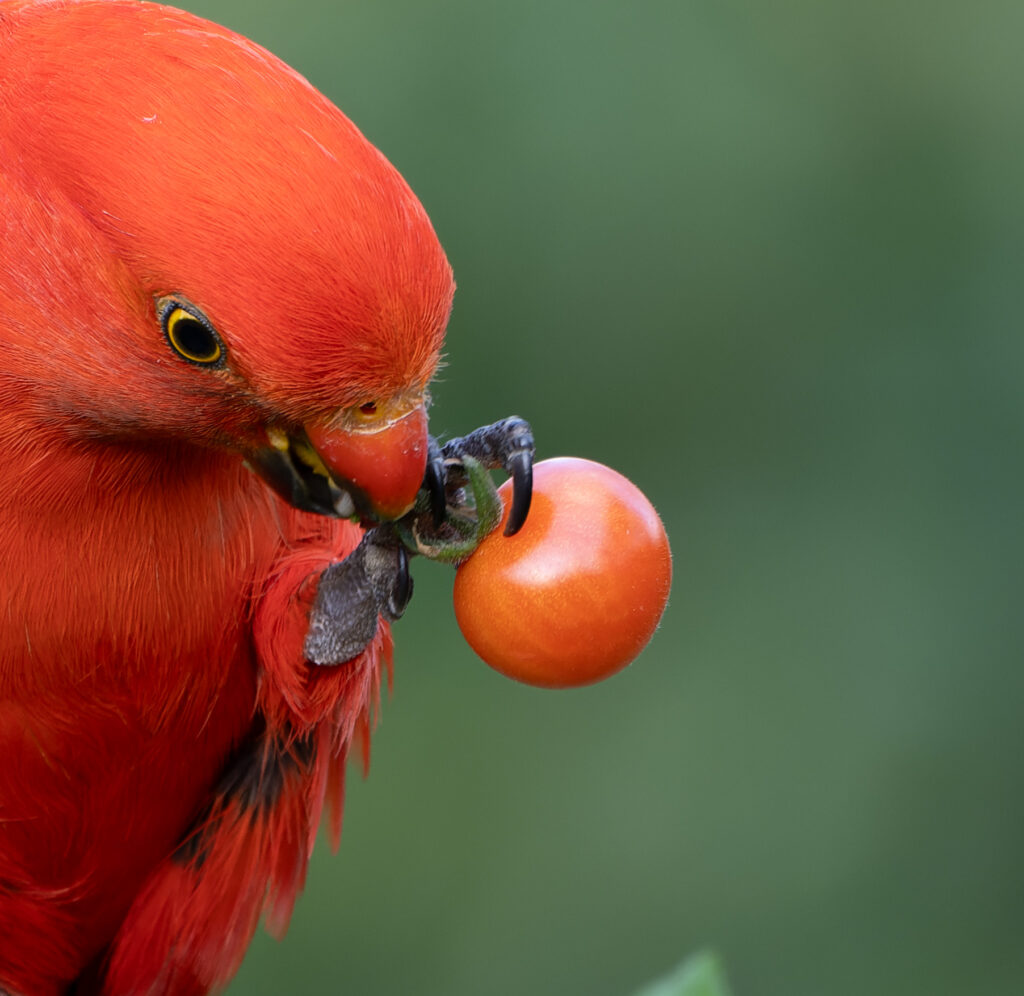
Earthworms, mealworms and insects
Suitable for insectivores like fantails, fairy-wrens, flycatchers and whistlers, and some carnivores like magpies and butcherbirds
Insects and invertebrates are a tasty treat for the insect and meat-eating birds in your backyard. You can purchase crickets and mealworms (either live or freeze-dried) from pet supply stores and online – or just dig up the worms in your garden! Calcium-rich commercial insectivore mix (such as Wombaroo) is also a good option.
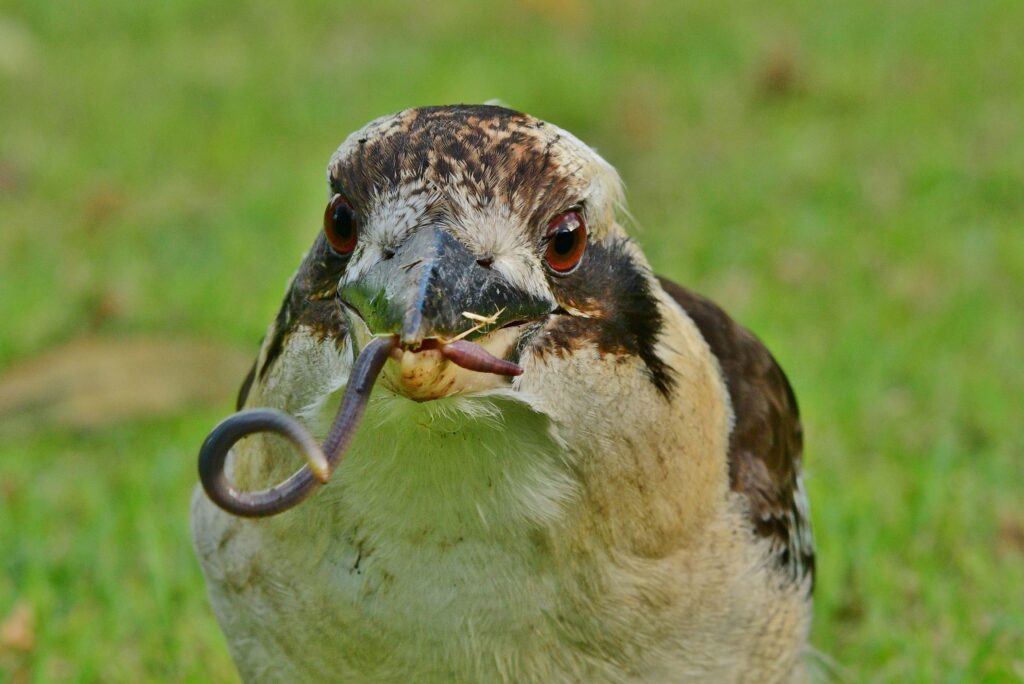
Seeds, nuts and grains
Suitable for parrots (including cockatoos, Galahs, corellas and rosellas), pigeons and doves and finches
Seed-eating birds have a varied diet of seeds from grasses, shrubs and trees – so it’s best to feed them a variety of high-quality uncooked seeds, nuts and grains of different sizes, including millet, wheat, rolled oats, sorghum and peanut pieces. Commercial seed mixes (produced by pet or animal food companies) typically have higher nutritional value than generic supermarket products, and you can also purchase special nutrient-rich pellets.
Tips: try to avoid high-fat oil seeds such as sunflower, canola and safflower seeds (or only provide them sparingly). While these are very popular with birds and readily available, they are very high in fat and protein and may cause a range of health issues.
Best practices for wild bird feeding
A treat – for us and them
The birds you feed are still wild birds, so it’s important that they continue to forage for food elsewhere and don’t become dependent on humans for survival.
Instead, think of it as a snack, not a meal – that supplements, rather than replaces, their natural diet. Make it an activity that you enjoy no more than once a week, not every day.
Birds are using this water to drink and bathe in, so it will need to be replaced daily to avoid the spread of disease (and mozzies!)
Reduce the spread of disease
Bird feeders and feeding stations can spread diseases like psittacine beak and feather disease if they’re not cleaned thoroughly and regularly.
To avoid this, clean and scrub the area daily using a wildlife disinfectant or bleach solution by diluting bleach in water at 1:20 (1mL of bleach for every 20mL of water).
Other tips for reducing the spread of disease:
- Replace food daily as it can rot, grow mould, introduce or spread disease or infection and attract rats, mice and other predators.
- Use multiple feeding stations for different types of food, and put food out at different times of day.
- Don’t feed large flocks of birds at the same time and stop feeding birds if you observe any sick or unwell birds among them.
What are you really feeding?
Birds are especially vulnerable to predation when feeding, so remember to place feed stations out of reach of cats and other predators. Keep pets and pet food indoors, away from birds and rodents.
Kangaroos and wallabies can suffer from ‘lumpy jaw’ if they eat bird seed, so keep feeders out of their reach. And avoid feeding abundant, pest or introduced species, including Rainbow Lorikeets and Common Mynas, as increasing their population decreases and displaces other bird populations.
Plant a bird-friendly garden
The best way to help the birds in your backyard long-term is to provide them with feeding and breeding habitat. To create more natural feeding resources for your feathered friends, check out our guide to planting native species in your garden.
